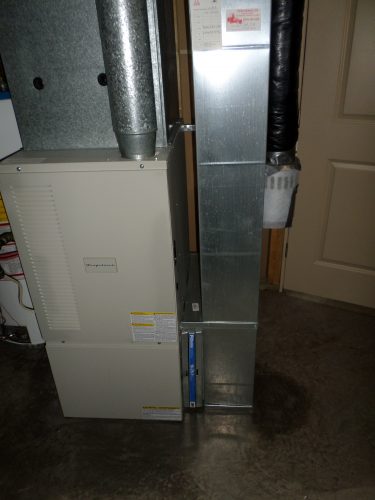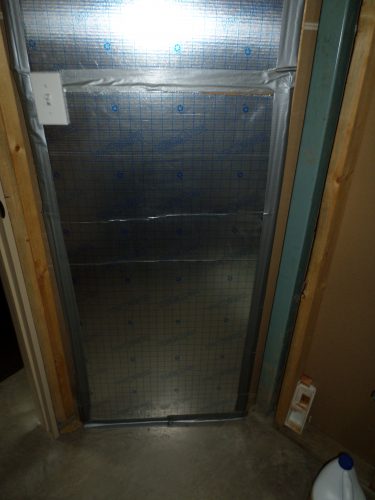Are you hearing noise from your air return? Before trying to resolve the issue, make certain that is the problem. Your enemy could be flanking noise. This is sound that travels through the HVAC system and maybe heard far from its source. It can be caused by the heat ducts, blower motor, loose vents, or Lego pieces moving around in a duct. On the other hand, if you have a noise in the air return, you could hear it coming from the outlets.
Note: Sound travels so well through metal piping that ships are still using the system for onboard communication.
How to Track the Cause
When your car overheats, what is the first thing you do? Change the thermostat? Pull off the heads? No! You make sure there is coolant in the radiator. At least I do. So let’s make sure you start with the easiest and least expensive option and work your way up.
1) Start With the Vent Covers
Correcting Vent Covers
I have seen an HVAC system compared to your vascular system. You need just as much vein capacity to carry the blood back to your pump as you need artery capacity to get it where it is going. Your HVAC system is based on the same idea. You cannot efficiently push 1200 cubic feet of air into the house while only returning 1000 cubic feet. The system overloads and complains–usually by making noise.
First thing–do not believe your eyes. Just because you have a honking big vent does not mean you have a corresponding opening in the wall and floor. Following is a picture of the return air vent in my office. Vent opening is 80 square inches, drywall opening is 26 square inches, floor opening is 23 square inches, incoming vent is 26 square inches. (To do it correctly, the contractor should have cut the right-hand stud shorter, installed a 2 x 4 cross-brace to support it, and made the floor and drywall openings bigger. The vent cover is more than big enough to provide sufficient air return from the room.) So remove the vent covers and check.

Air conditioners require approximately 125 square inches of return air for each ton of air conditioning capacity. (If you want to know why it is rated in tons, please see this Wikipedia article.) If your air conditioning system is part of the heating system, you should have enough return air vents (take them off and check). If it is a stand-alone unit, you will have to check the size and make sure the return venting has enough capacity. Quite often, there will only be one or two returns in the house. Here are a few suggestions to quiet return air vents.
- Bend the vanes (fins on the vent) straight to allow more airflow. This will cut down on air turbulence, reducing flutter (vibration of the fins) and the ringing or singing noise.
- Make sure all the vents are securely screwed to the wall. This prevents air being pulled through the confined space around the edges and making an annoying whistling sound. If you cannot get a tight fit, give some thought to putting a weatherstrip between the vent and wall to seal it.
- Make sure all vents are clean.
- If the vent has an adjustable opening, make sure it is fully open. Make sure all of the vents are open. One blocked vent may not make much difference, but two or more will likely cause the system to try to pull too much air through the open vents. You will hear that.
- Change the vent covers. I have seen some pretty artsy-fartsy vent covers. Besides looking cute, they will also usually cut down airflow.
- Hang a soundproof blanket over the returns. Don’t be ridiculous. We are trying to increase air flow.
Remember that reduced airflow not only causes noise; it will make your furnace less efficient, work harder, and probably wear out sooner.
2) Check and Service the Filters
Not only will clean filters cut down duct and furnace noise, but they will also cut down energy costs, keep your indoor environment healthier, and extend the life of your furnace.
Replacing Disposable Filters
Clogged or dirty filters can also create a noisy air return system–again because the system is working harder than it needs to trying to get enough return air into the heat or cooling chamber. Change them regularly–usually every 3 – 4 months. We have been using the Filtrete 1900 filter for the best combination of airflow and dust collection. (Consumer Reports agrees with me.) They make multiple sizes and thicknesses. Apparently, they also come with an app to remind you when to change the things. (I tend to go into the Snoopy dance if I can figure out how to check voice mail on my cell, so the best app for me is to get it done as soon as my wife tells me to.)
Cleaning Re-usable Filters
If your system has a reusable filter, it will need to be cleaned at regular intervals. Electrostatic filters about every 3 months, electronic filters about every week. Unless otherwise specified on the filter directions, you should be able to vacuum the dust off, then spray them off with a hose. If the filter is greasy, you may have to soak it in the tub with a gentle detergent. Make sure it is dry before re-installing it.
Note: I am not a fan of reusable filters. We tried a couple of them and found they either did not filter well enough or were too dense and did not allow enough air to pass through. Also, my time might not be worth much, but if I have to clean a filter every week, I will be getting disposable ones.
3) Check the Ductwork
Quieting Existing Ducts
Unless your ducts are big enough to crawl into, you really only have limited options available for making existing ducts quieter. There is a product called Duct V-Max Vibration Dampener, which adheres to the sheet metal and restricts expansion and contraction, and vibrations. This could cut down some of the noise. It might be very helpful to cut down the noise metal ducting attached to the floor joists make when you walk across the room. (I have no experience with any of this type of product, so I am only bringing it to your attention as a possibility.)
If you have round air return ducts you can wrap them with foil backed fiberglass wrap. This will certainly cut down noise in the basement and will probably help some on the main floor. But it will not eliminate flanking noise that passes through the pipes and into your living areas.
Replacing Ducts
If you are considering replacing your metal ducting attached to the bottom of the floor joists–look no further than ThermOpan. It is advertised as ‘No Noise’, fire-resistant, and R-5 with the air space. I have it in our house, and the return air system could not be quieter. The only completely metal part of the return air system is attached to the furnace.

 ThermOpan installation
ThermOpan installation
You could use the Duct V-Max to wrap the metal parts of the cold air return, but by the time the air gets there, I think it will be cool enough that there will not be any expansion and contraction, which should eliminate that flanking noise. If it happens to be vibrating on the floor, you can lift it and place a soundproof mat under it.
Another option is round insulated flex pipe. But try not to re-invent the wheel. If you are replacing round pipe, then use round pipe. If you are replacing metal attached to the joists, your system is already set up to use ThermOpan.
Sound Attenuation Ductwork
Sound attenuation ducts are almost invariably used in commercial applications and installed when the system is installed. It would have to sound like a jet taking off before I would consider going to the expense and annoyance of having something like this installed. Use some, or all, of the options suggested in this article instead.
4)Decrease Static Pressure
Static pressure is often caused by having ducts that cannot handle the volume of air being pushed through them. If you suspect this to be the cause of your noise problem, a professional inspection is the best place to start. The things you can try are:
- Changing all the vents (incoming and return) to high velocity. This will provide the best air movement with the least noise.
- Add extra return air ducting. Only if you feel comfortable cutting into the existing system and through the floor. Again, you might want some professional input before doing this. If your system (motor, fan, or warm air ducts) are not made to handle more return air–why bother? And you will probably add stress to the system.
- Adjust the fan speed, or install a variable-speed blower. These options also seem counter-productive to me. I do not know enough about HVAC to just slow down the fan without finding out the end result. Which could be spending money on a new fan or blower–than spending way more money on an HVAC company to fix my fix.
Note: There are not many good things about getting old. But one of them is knowing what you don’t know–and admitting it.
Final Thoughts
Call a Professional HVAC Technician
If some, or all, of this, seems a little above your pay grade–please call a professional HVAC company. This is, after all, a pretty complicated system involving air movement, fuel and flame, electricity, and many different components acting in concert to make your life more comfortable and safe. Changing a few vent covers and filters or wrapping ducts is one thing; contemplating anything more should have some professional input.
Duct Cleaning
I have seen duct cleaning recommendations range as high as every 7 – 10 years. We live in a farming community surrounded by grain fields. Dust happens. And regardless of how much air moves through the system, not all of it will get to the filter. So we get ours cleaned every 3 – 4 years. Works out to about $50 per year. Seems like a small investment to help keep things running smoothly.
